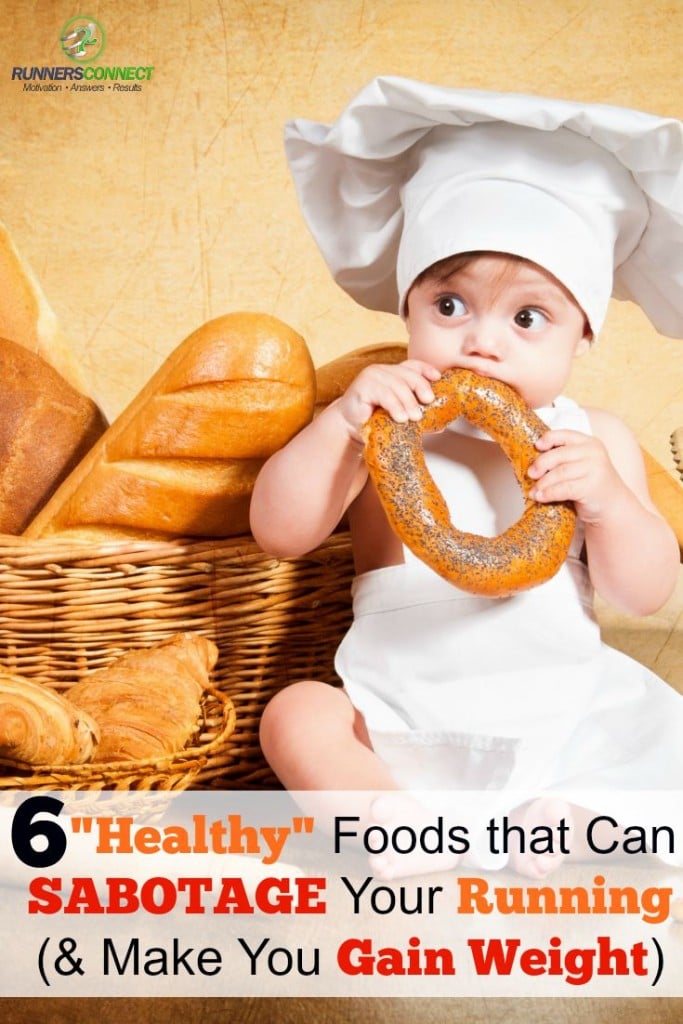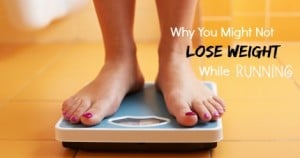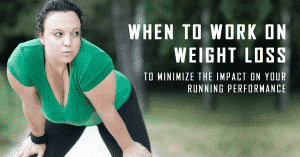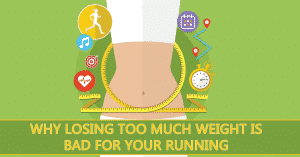 There are many foods that are staples in a runner’s diet.
There are many foods that are staples in a runner’s diet.
Most of them are also the foundation of a well-rounded, healthy nutritional plan: Whole grains, fresh fruits and vegetables, and low-fat milk and dairy products to fuel your runs, and help you feel good while doing it.
However, a handful of foods that fit into these categories are what I classify as imposter health foods. In other words they are foods that we may think are innately healthy or that would make us healthier if we ate them.
Don’t get me wrong,
I think that all of the foods mentioned below can be and often should be a part of a sports nutrition diet. We just need to change our perception about what components these foods actually contain and how to appropriately use them to fit our dietary needs.
Energy Bars
The Good: An energy bar is a quick and convenient source of energy, carbohydrates, protein, and a variety of vitamins and minerals.
The Bad: Energy bars are sometimes seen as a “must-have” in a runner’s diet. The perception is that all runners eat energy bars or that energy bars have something runners need and can’t get from other foods.
Although energy bars can have a place in the training diet, there are a few things to keep in mind.
- Some bars can be very high in calories and fat — sometimes equaling what is normally consumed in a full meal yet is only being used as a snack.
- Review the label because some have a nutrition profile more similar to a candy bar than a health food.
- Some bars are heavily fortified with vitamins and minerals which may run the risk of consuming too high of doses when added to other foods and supplements in your diet
- Energy bars are quite financially costly when compared to other food sources with equivalent calories and carbohydrates
Bottom line
Most energy bars are nutritious, concentrated sources of energy. However, they should be reserved for your heaviest training days when you require a significant amount of extra energy and carbohydrates.
They should not be used to replace meals when you could otherwise be eating a variety of fruits, vegetables and whole grains. If you want advice on how to find the best bar for you, refer back to this blog post: Healthy Energy Bars for Runners.
Granola
The Good: Granola is a concentrated source of carbohydrates that can add flavor and texture to a variety of foods.
The Bad: Overindulging is easy because granola can pack a lot of calories into a small volume.
Consider the following:
- Many granolas are high in fat, sugar and calories and usually those marketed as low-fat compensate with additional sugar
- Recommended serving sizes for granola are quite small (1/4 to 1/2 cup) yet we usually eat portions closer to 1 cup or more
- Unlike other breakfast cereals, granola is often unfortified, so you may be missing out on vitamins and minerals if you suddenly replace your breakfast or snack with only granola
Bottom line
Keep portion sizes of granola small; use it as a topping for fruit or yogurt or combine it with other cereals that are lower in fat and calories.
Nab Our FREE 4-part Weight Loss Email Course
You’ll learn the science behind losing weight and still running well so you can understand the “why” of weight loss for long-term success.
Lessons include why simply running more and eating less won’t help you lose weight, why your weight fluctuates each day, and the best way to distribute calories throughout your day. Plus more…
Bagels
The Good: Sticking with the theme, bagels are a convenient, concentrated source of energy and carbohydrates that can fuel a workout or be used for recovery.
The Bad: Bagels options vary greatly in portion size and nutritional content. What we’ve accepted as “normal” may be packing a lot more calories than we think.
- Bagels are very energy dense with a typical size bagel containing ~300 calories and ~60 g of carbohydrate
- Bagels are typically not eaten plain — we add a lot more calories with peanut butter, jams, or cream cheese on top
- Many bagels are made with refined, white flour that is lacking in fiber and nutrients that would be obtained from whole grains
Bottom line
Choose smaller portion sizes (either half of a normal bagel, thin or the cute little mini bagels), choose bagels made with whole grains, and add a fruit or protein source to make it a complete meal.
Yogurt
The Good: Yogurt is an excellent source of calcium and protein and is very versatile in its uses. The composition of yogurt includes beneficial bacteria that aids digestion.
The Bad: You have to look closely at the nutrition label to know what you are really getting.
- Some yogurt, as with other dairy products, are higher in calories than most people realize
- Most “fruit” flavored yogurts are high in sugar since the fruit is often just sugary jam packed into the bottom
- Frozen yogurt is sometimes put in the same category as yogurt even though frozen yogurt doesn’t contain nearly as much calcium or protein and is very high in added sugars
Bottom line
Yogurt is a great addition to the sports nutrition diet. Buy Greek or plain yogurt and maximize its nutritional profile by adding your own flavorings like honey, vanilla, cinnamon, berries, etc.
Smoothies
The Good: Smoothies can be convenient, portable sources of fruits, vegetables, dairy and more, helping you meet your daily needs for these food groups.
The Bad: Smoothies can hide a lot of calories and added sugars in an otherwise healthy sounding beverage. Keep these things in mind:
- Beverages or liquid forms of food are less filling that solid foods so the same amount of calories won’t be as satisfying (consider the feeling of fullness after eating an apple vs. drinking a cup of apple juice)
- Many “smoothies” purchased outside of the home have a lot of added sugars that make the nutritional content similar to soft drinks
Bottom line
I like smoothies as an alternative to a snack with a lot of added sugars. It helps me meet my daily requirements for fruits and dairy and quenches my thirst after a hard workout. It is best to make your own smoothies using whole fruit, low-fat milk or yogurt, and no added sugars. Below is my standard recipe, but we have some more suggestions on our 4 Essential Protein Supplements for runners post.
1 cup 100 percent orange juice
1 small container (5.3 oz) plain Greek yogurt
1 heaping cup of frozen berries
1 oz tart cherry juice
(sometimes 1-2 handfuls of fresh spinach)
As you can see, there are good and bad things about each of these foods. We are not saying do not eat them, but just be very careful with how and when you consume them.
[bctt tweet=”6 Foods that are considered “healthy” may be sabotaging your training. Learn more here:”]





3 Responses
What are your thoughts about adding a scoop of protein powder to the smoothie? I usually choose a whey powder over soy but I’m conscious of the extra calories from the powder.
Great question. Personally, I like adding protein to my shakes because I think as runners we often don’t get enough. While it’s a few extra calories, the fact that it’s basically pure protein means they aren’t “junk” calories.
As for whey vs. soy, I would go for whey if it’s a pre or post run smoothie since whey is very rapidly absorbed. If it’s a meal/snack, I would go with soy, since that tends to be absorbed throughout the day.
Jeff: In sticking with the protein topic I am wondering if you can recommend any protein that is void of cholesterol. Thanks, Markus